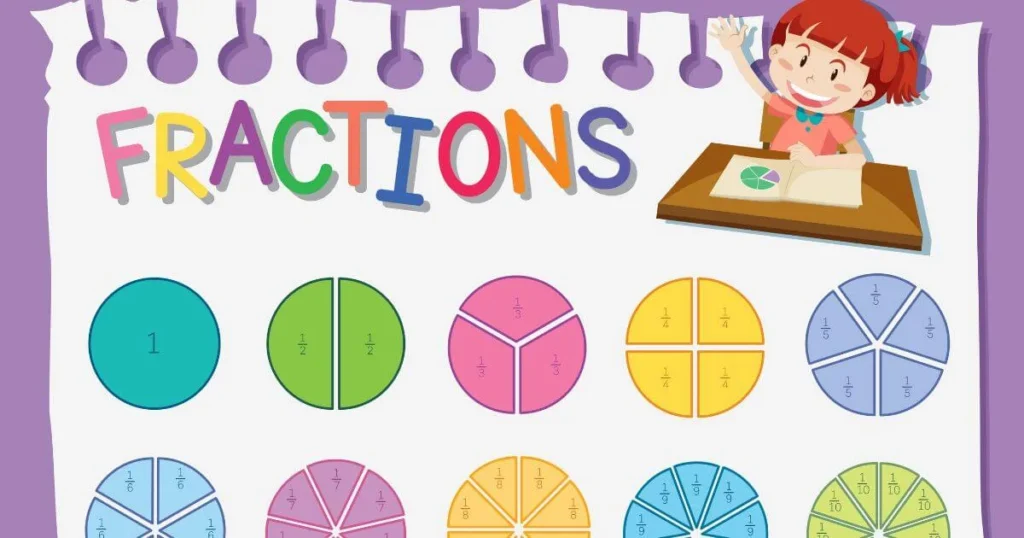
How To Multiply Fractions A Comprehensive Guide
Multiplying fractions is a fundamental mathematical skill, and fractions are an integral element of mathematics. Multiplying fractions is an essential skill for anyone, be they a student trying to ace their math exam or an adult wanting to brush up on math. We’ll cover all there is to know about multiplying fractions in this extensive guide, from how to cross multiply fractions to how to multiply and divide fractions. We’ll also look at how to multiply fractions with whole numbers and fractions with different denominators. Now let’s explore the realm of multiplying fractions.
How to Multiply Fractions with Whole Numbers
The procedure of multiplying fractions by whole numbers is simple. Here’s a detailed how-to:
Step 1:
Convert the whole number to a fraction by placing it over 1. For example, if you have 3, it becomes 3/1.
Step 2:
Multiply the fractions as you would with any other fractions. This means multiplying the numerators (the top numbers) and the denominators (the bottom numbers).
Step 3:
Simplify the result if needed. Reduce the fraction to its simplest form, if possible.
Example: Let’s multiply 3/4 by 5.
Step 1: Convert 5 to a fraction: 5/1.
Step 2: Multiply the fractions: (3/4) x (5/1) = (3 x 5) / (4 x 1) = 15/4.
Step 3: Simplify if possible. In this case, 15/4 is already in its simplest form.
How to Multiply Fractions with Different Denominators
Fractions with distinct denominators can be more difficult to multiply. You must identify a common denominator in order to multiply fractions with distinct denominators. As follows:
Step 1:
Find a common denominator for the two fractions. This is the least common multiple (LCM) of the denominators.
Step 2:
Rewrite both fractions using the common denominator.
Step 3:
Multiply the fractions, as you would with fractions having the same denominator.
Step 4:
Simplify the result if necessary.
Example: Let’s multiply 2/3 by 1/4.
Step 1: The LCM of 3 and 4 is 12.
Step 2: Rewrite the fractions with a common denominator: (2/3) x (1/4) = (2/3) x (1/4) x (4/4) = (8/12) x (3/12).
Step 3: Multiply the fractions with the common denominator: (8/12) x (3/12) = (8 x 3) / (12 x 12) = 24/144.
Step 4: Simplify the result: 24/144 can be reduced to 1/6 by dividing both the numerator and denominator by their greatest common divisor, which is 24.
How to Cross Multiply Fractions
Fractions can be multiplied and equations involving fractions can be solved using the cross multiplication method. This is how it operates:
Step 1:
Write the two fractions you want to multiply with an equal sign in between.
Step 2:
Cross-multiply by multiplying the numerator of the first fraction with the denominator of the second fraction and vice versa.
Step 3:
Multiply the two denominators together.
Step 4:
Simplify the result if necessary.
Example: Let’s multiply 2/3 by 3/5 using cross multiplication.
Step 1: Write the fractions with an equal sign: (2/3) * (3/5).
Step 2: Cross-multiply: (2 x 5) = 10 and (3 x 3) = 9.
Step 3: Multiply the two denominators together: 3 x 5 = 15.
Step 4: Simplify the result: (10/15) can be reduced to 2/3 by dividing both the numerator and denominator by their greatest common divisor, which is 5.
How to Multiply and Divide Fractions
Fractional multiplication and division are closely related operations. You can multiply by the reciprocal of a fraction to divide by it. As follows:
To Divide Fractions:
Step 1:
Identify the fraction you want to divide by.
Step 2:
Find the reciprocal of that fraction by flipping it, which means swapping the numerator and denominator.
Step 3:
Multiply the first fraction by the reciprocal of the second fraction.
Example: Let’s divide 3/4 by 2/5.
Step 1: Identify the fraction you want to divide by: 2/5.
Step 2: Find the reciprocal of 2/5, which is 5/2.
Step 3: Multiply 3/4 by 5/2.
To Multiply Fractions:
Fraction multiplication has already been covered in the earlier parts. When you want to multiply fractions, the same rules hold true regardless of whether they have the same or different denominators. Just take the previously mentioned actions.
Example: Let’s multiply 3/4 by 1/3.
Step 1: Multiply the numerators: 3 x 1 = 3.
Step 2: Multiply the denominators: 4 x 3 = 12.
Step 3: Simplify the result if necessary.
Conclusion:
An essential mathematical ability that has applications in a variety of real-world contexts, including baking, cooking, building, and engineering, is multiplying fractions. It is imperative that both adults and kids know how to multiply fractions with whole numbers, with different denominators, how to perform cross multiplication, and even how to split fractions by multiplying by the reciprocal. You’ll be prepared to take on a variety of mathematical problems and improve your problem-solving abilities if you can grasp these strategies. Never forget that practice makes perfect when it comes to multiplying fractions, so don’t be afraid to work through a variety of examples to make sure you understand.
FAQS
Multiply the numerators and denominators together to multiply fractions step-by-step.
Find a common denominator before multiplying fractions with distinct denominators.
Multiplying the numerators and denominators together yields the resultant fraction when dividing by a fraction.
If you need to multiply more than one fraction at a time, you can also look for a common denominator.
